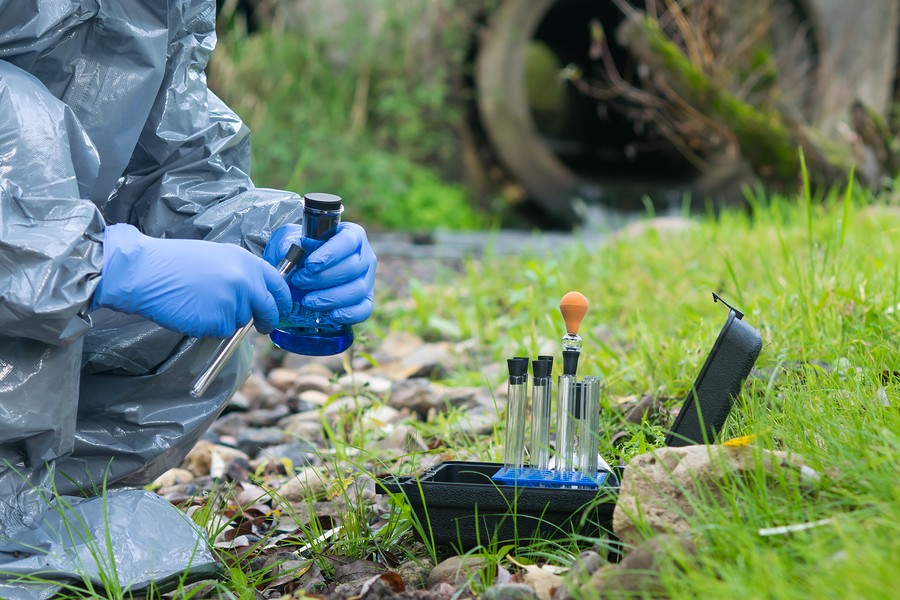Buying commercial or industrial property can be an excellent business investment. However, every transaction carries risk. Environmental risk can be exceptionally high if you’re purchasing real properties like:
- Gas stations
- Foundries
- Factories
- Power plants
- Mines
- Farms
- Landfills
- Auto shops
- Facilities with underground storage tanks (USTs)
- Hazardous waste sites
If you’re buying a property like this, your lender likely required you to perform a Phase I Environmental Site Assessment (ESA) before moving forward. This fundamental step of due diligence will uncover any recognized environmental conditions (RECs) and potential contamination.
But what happens if your Phase I ESA raises some red flags? You don’t have to give up on your dream property and business goals. Performing a Phase II ESA is the next step. While delving deeper into due diligence can be daunting, being informed and prepared can make the whole process go smoothly. Here are a few of the things you can do to ensure a successful Phase II ESA.
Vet your consultants.
There are hundreds of U.S.-based firms that specialize in due diligence, so you’ll have the opportunity to select your consultant based on a myriad of factors aside from price. When you’re seeking an environmental consultant to perform your Phase II ESA, here are a few things to look for:
- Deep understanding of American Society for Testing and Materials (ASTM) standards and the Comprehensive Environmental Response, Compensation, and Liability Act (CERCLA)
- Knowledge of federal, state, and local environmental regulations
- Experience assessing the type of property you’re looking to purchase
- Competencies outside of due diligence to help see your projects through to completion
- Reputation for speedy response time
Have the results of your Phase I ESA handy.
If you’re hiring a different firm to complete your Phase II ESA, make sure you have your Phase I ESA results on hand before getting started. This will give your consultant the information they need to know about RECs at the property and curb the frequency of back-and-forth calls and emails.
Keep an open mind about the scope of work.
Even though environmental professionals use a set of standards for Phase II ESA processes, your consultant will make a lot of judgment calls to form your scope of work. As such, not all Phase II ESAs are (or should be) performed the same.
Your environmental consultant will take all factors into play, including applicable state and federal regulations, the geology of the property, the kinds of buildings and infrastructure present, and the extent of concern.
In addition to soil and groundwater sampling, other sampling activities may be necessary. For example, if there are wells, drums, floor drains and catch basins, or USTs on the property, your consultant will likely recommend further sampling or monitoring.
Limited Phase II ESAs
In some cases, you may be eligible for a limited Phase II ESA. During these assessments, fewer samples are taken from fewer locations.
This can be a possibility when:
- Your Phase I ESA reveals the potential for very minor contamination
- You do not need to confirm the extent of RECs
Understand that your consultant will likely collect soil and groundwater samples.
The cornerstone of any Phase II ESA is soil and groundwater sample analysis. Soil or groundwater contamination can result from man-made pollutant releases or, in rare cases, natural pollutants exceeding ordinary levels.
To assess the risk associated with RECs identified in a Phase I ESA, your environmental consultant will collect soil and groundwater samples to test for things like lead, mercury, nickel, zinc, arsenic, copper, polycyclic aromatic hydrocarbons (PAHs), pesticides, petroleum, and other pollutants and hazardous materials.
The sampling process involves:
- Determining which contaminants are most likely to be found on the property
- Mapping out sample areas that will yield accurate, representative results
- Choosing the appropriate drilling method(s) for sample collection
- Direct push
- Hollow-stem auger
- Hand auger
All of your samples will then be sealed, labeled, and prepared for transport following stringent chain of custody recordkeeping rules. Then, the consultant will submit the samples for laboratory testing.
Know there will be a short wait for your results.
Since every Phase II ESA is different, there’s no standard timeline for getting results back from the lab. However, you shouldn’t have to wait more than 2-3 weeks for the results and final report.
Leverage your Phase II ESA results to move forward with your property transaction.
Phase II ESA results are well worth the wait, as they provide critical information that will help you make the best decision for your business. You can expect to see:
- Lab results summary
- A report of on-site contamination
- Any additional site investigation needs
- Opportunities for liability protection from existing contamination
- Required and recommended remedial actions
Once you take in the results and the report, you can choose to:
- Terminate the transaction
- Negotiate the sale price to make up for assessment and remediation costs
- Require the existing owner to clean up the property
- Move forward with clean-up activities after the sale
If you choose to move forward with the sale in any way, your environmental consultant may be able to assist with additional sampling and testing, risk management, remediation, permitting, and identifying brownfield redevelopment funding opportunities.
Ready to schedule your Phase II ESA? Get in touch with our environmental team to get started.

